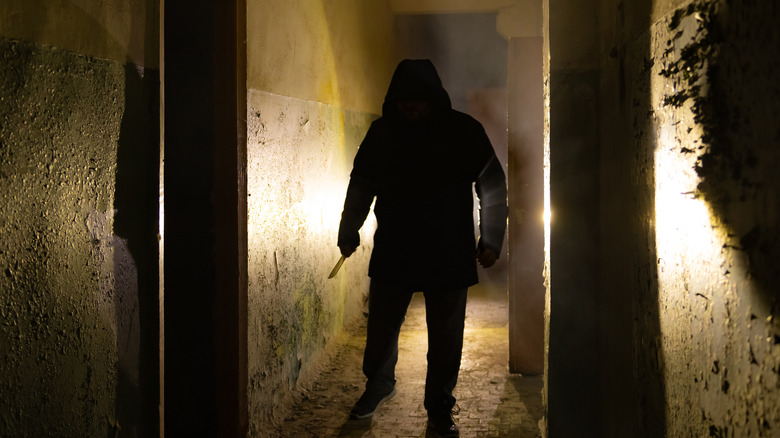The Truth About Infamous Serial Killer Jack The Stripper
In the 1960s, a dangerous serial killer terrorized the streets of London and claimed the lives of several women. The victims were sex workers who were killed gruesomely and left stripped naked. Because of the killer's modus operandi, he was dubbed Jack the Stripper. According to ATI, there were no witnesses to the murders, and no evidence was found to point to the killer. The only information investigators had to go on was the victims' information and the way they were killed — the only common link was their professions.
Authorities finally found a lead on the fifth victim, who was discovered with spots of paint on her body. With the help of forensics experts, the team of investigators determined that the paint was the same type used on cars in auto repair shops, per A&E. As the killer continued his string of terror, later victims were also found to have the same type of paint on their bodies. With evidence in hand, investigators believed that Jack the Stripper worked in an auto repair shop.
The investigation and Jack the Stripper suspects
Based on the little evidence that authorities had, they interviewed close to 7,000 suspects. Although the killer wasn't found among the pool, Scotland Yard's chief superintendent, John Du Rose, held a series of news conferences saying that they had narrowed down the suspect list from 20, then to 10, and eventually to three. Interestingly, the murders stopped after the first false announcement made to the public, as reported by The Chiswick Herald.
Throughout the course of the investigation, it was believed that Jack the Stripper had kept the bodies in a storage area before dumping them, per ATI. The investigators eventually found the storage space — a spray paint shop with products that matched the paint on the victims. One of the suspects the police looked into was Mungo Ireland, a security guard who had access to the storage unit. According to The Ministry of History, Ireland killed himself after figuring out that the police were zeroing in on him, and the murders stopped. For many, the suicide and halt to murders may point to guilt, but further research noted that Ireland was in Scotland when several of the killings happened. And while there were other suspects the investigators honed in on, none of them panned out.
Jack the Stripper's identity is still a mystery
To this day, the identity of Jack the Stripper remains a mystery. Although scientific advancements continue to aid cold cases, there was never DNA evidence found in Jack the Stripper's crime scenes. And while some investigators and those who have tracked Jack the Stripper's case have their beliefs on who the killer might be, there is currently no way to know for certain. The name most associated with the case is Harold Jones, who was convicted of murdering two girls in the 1920s (via The Week). Jones had access to the killer's storage unit, and as a panel beater, he was exposed to the same type of paint found on the victims.
Per The Ministry of History, Jack the Stripper claimed the lives of at least six victims from 1959 to 1965. Just like the notorious serial killer Jack the Ripper, it appears that the true identity of Jack the Stripper will remain a mystery — at least for now.


